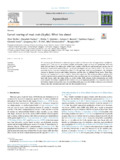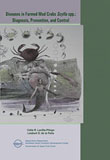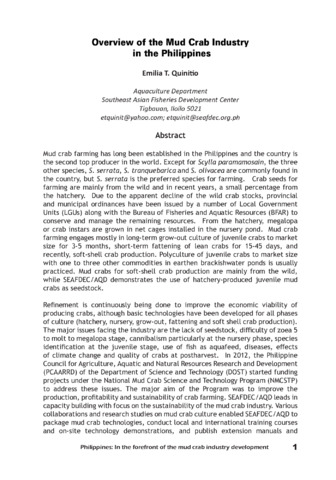Collection of the mud crab Scylla serrata var paramamosain in Tinagong Dagat and Sapian Bay, northern Panay
| dc.contributor.author | Solis, Noel B. | |
| dc.contributor.editor | Bagarinao, Teodora | |
| dc.date.accessioned | 2018-03-13T02:23:15Z | |
| dc.date.available | 2018-03-13T02:23:15Z | |
| dc.date.issued | 2007 | |
| dc.identifier.citation | Solis, N. B. (2007). Collection of the mud crab Scylla serrata var paramamosain in Tinagong Dagat and Sapian Bay, northern Panay. In T. U. Bagarinao (Ed.), Research Output of the Fisheries Sector Program (Vol. 2. Reports on Fisheries and Aquaculture, pp. 98-99). Quezon City, Philippines: Bureau of Agricultural Research, Department of Agriculture. | en |
| dc.identifier.isbn | 9718511776 | |
| dc.identifier.uri | http://hdl.handle.net/10862/3273 | |
| dc.description.abstract | Mud crabs were collected by baited traps from the mangroves and estuaries of Tinagong Dagat Bay and Sapian Bay in Capiz, northern Panay monthly over 18 months. Scylla serrata var paramamosain made up 95.4% of the collection and Scylla oceanica, 4.6%. Mean catch rates of S. serrata from Tinagong Dagat was 0.4 crabs/trap in the mangroves and 0.5 crabs/trap in the estuary; in Sapian Bay, 0.9 crabs/trap in both habitats. In both bays, S. serrata occurred year round, but at greater abundance during the rainy season (June–September). Most crabs were 2–10 cm in carapace width, but some were up to 14 cm. Crabs were smaller in the mangroves (modal size 5 cm) than in the estuary (modal size 8 cm). The smallest crabs (2 cm) were collected in the mangroves in January and May, and the 3 cm crabs occurred most months except June, August, September, and November. The presence of smaller crabs in greater numbers in the mangroves indicates affinity for shallow, sediment-laden habitat with plenty of shelters in the form of mangrove roots and leaves. Very few crabs over 8 cm were captured in the mangroves. Crabs of 4–14 cm were captured in the estuaries, the 12–14 cm ones during July–October. The samples at each site formed several size groups every month, and ‗cohorts‘ could be discerned and followed over the next months. It was estimated that the 2–4 cm size group in January–May reached the size of 8–10 cm by October–November. Juvenile mud crabs apparently spent one year in the mangroves or estuaries. There were more males than females (1F:1.2M) in Tinagong Dagat, but the other way around (1M:1.3F) in Sapian Bay. Berried crabs of 14 cm were occasionally caught by filter net in Tinagong Dagat. | en |
| dc.language.iso | en | en |
| dc.publisher | Bureau of Agricultural Research, Department of Agriculture | en |
| dc.subject | Scylla serrata | en |
| dc.subject | Scylla paramamosain | en |
| dc.subject | Philippines | en |
| dc.title | Collection of the mud crab Scylla serrata var paramamosain in Tinagong Dagat and Sapian Bay, northern Panay | en |
| dc.type | Book chapter | en |
| dc.citation.spage | 98 | |
| dc.citation.epage | 99 | |
| dc.citation.bookTitle | Research Output of the Fisheries Sector Program | en |
| dc.subject.asfa | catch-effort | en |
| dc.subject.asfa | population number | en |
| dc.subject.asfa | crab fisheries | en |
| dc.subject.asfa | fisheries development | en |
| dc.subject.asfa | habitats | en |
| dc.subject.scientificName | Scylla serrata | en |
| dc.subject.scientificName | Scylla tranquebarica oceanica | en |
Files in this item
| Files | Size | Format | View |
|---|---|---|---|
|
There are no files associated with this item. |
|||




